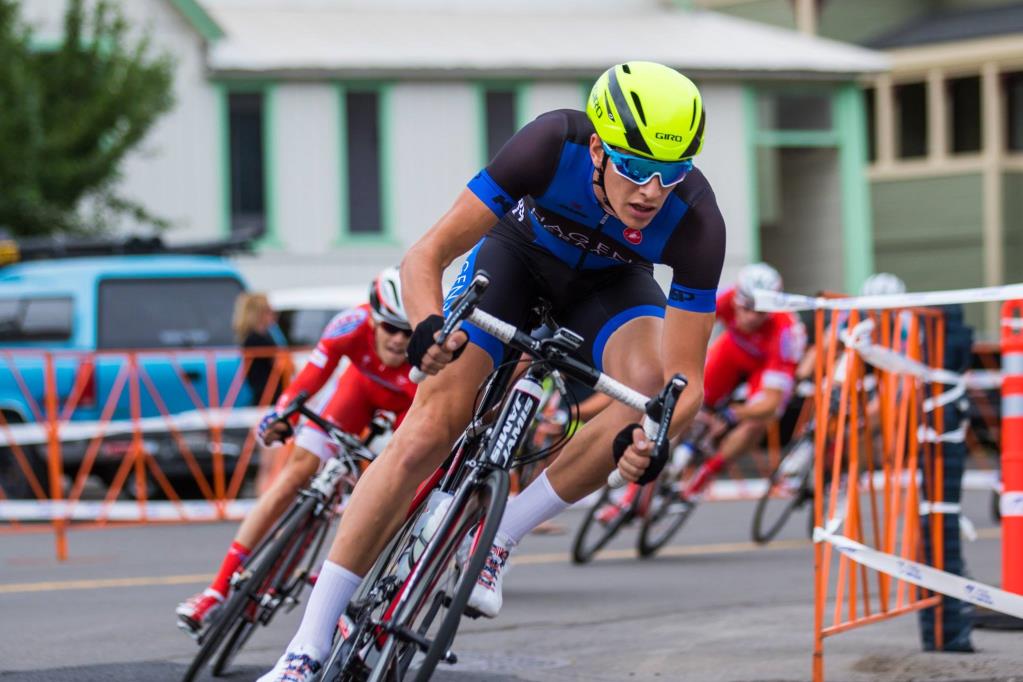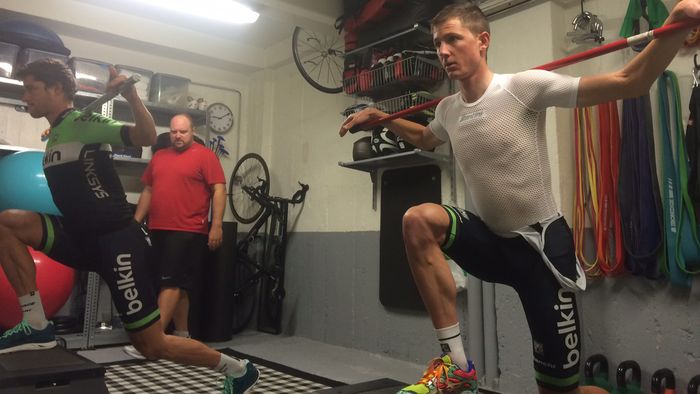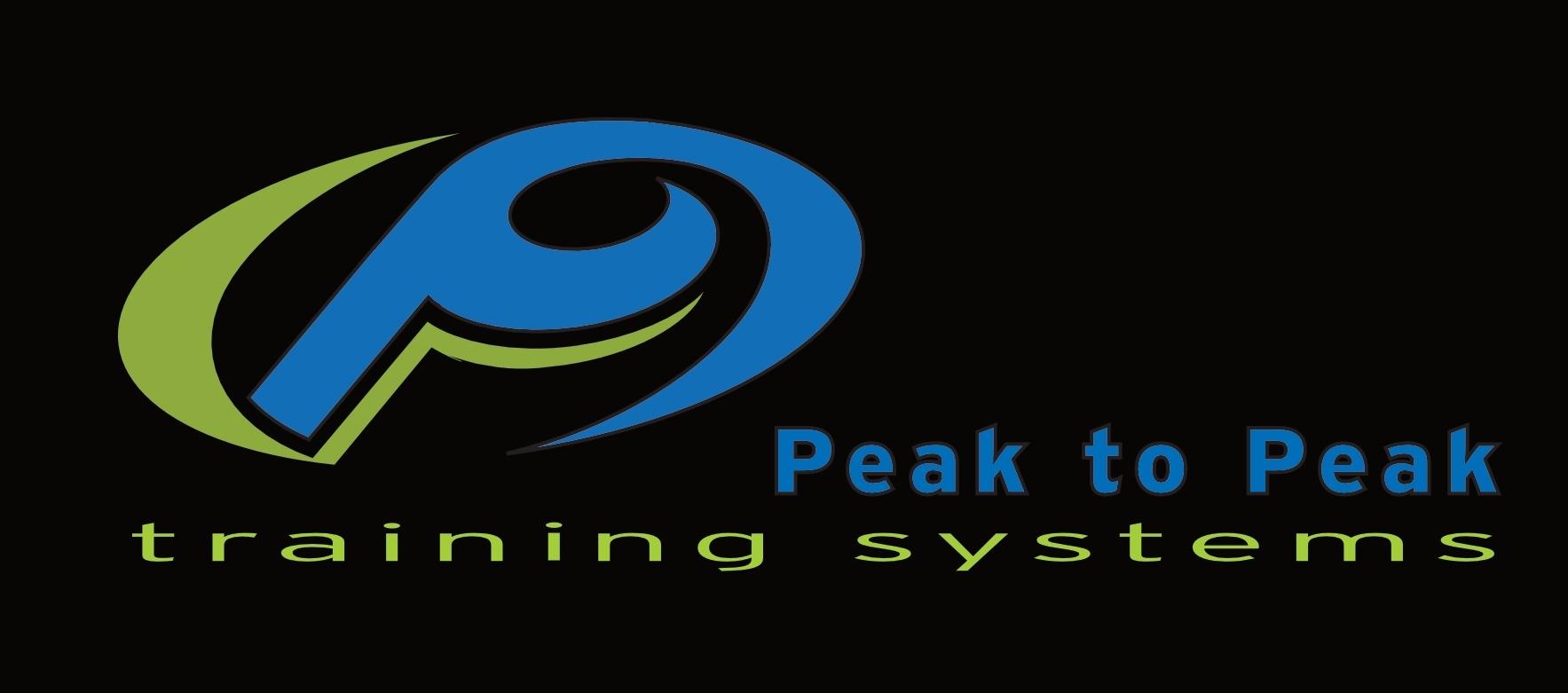Functional Movement Training for Endurance Athletes:
What is it and why consider it?
By Jon Heidemann, Elite level USA Cycling Coach
Cycling Talent Identification & Development Specialist
Multi-state, national and international cycling champion
Owner, Peak to Peak Training Systems
Let me begin this article by admitting I am NOT an expert on functional movement. Rather, I am a cycling coach who has nearly 3 decades of experience & understands the impact unbalanced functional movement qualities have on often unaware athletes and their everyday training & performances. I witness it every single day I work with athlete, do bike fits or ride my bike down the road behind another cyclist. I see it when I watch someone stand, pick something up, walk or run. I’ve been studying it for almost a decade. The following article’s purpose is not to highlight my expertise or lack thereof on the subject, but to emphasize the importance of functional movement training and its potential impact on endurance athletes.
Functional Movement for Cyclists Series: muscle Flexibility, Strength and Coordination
Muscle flexibility, strength and neural coordination are the very basic characteristics of moving in humans. As athletes, these aspects of movement are crucial for performance. ALL cyclists are athletes at some level. Having a balanced body that is strong, coordinated and flexibly balanced & healthy will directly impact power, speed, handling, comfort, and endurance....and not just on your bike. If you alpine or nordic ski, play hockey, run, or swim, you will also see, and likely feel, improvement in your performance if you work to have a precisely balanced body. Every physical imbalance our bodies have causes a negative imp act on performance. If we sense discomfort or are underperforming, it has an instant impact whether we are aware or not. The more physically balanced we are on the bicycle, the better our bicycles handle and are handled. The stronger we are, the faster we go. However, many cyclists have imbalances that have existed long before they started riding, so it's hard wired into the system and can be difficult to change (note: I didn't say impossible).
act on performance. If we sense discomfort or are underperforming, it has an instant impact whether we are aware or not. The more physically balanced we are on the bicycle, the better our bicycles handle and are handled. The stronger we are, the faster we go. However, many cyclists have imbalances that have existed long before they started riding, so it's hard wired into the system and can be difficult to change (note: I didn't say impossible).
Now, let's visualize a human skeleton just hanging from a string attached to the skull with no other organs, or muscles, or skin. If the bone structure of that skeleton has matching lengths of both legs and arms, it very likely will hang in a balanced nature. Now, let's add some muscles to it. Again, if all the right and left paired muscles have equal conditions and lengths (for example, left and right hamstrings, low/mid back-psoas, glutes, quads, hip-flexors, calves, etc.) our skeletons will continue to remain fairly balanced. But, if one of those paired muscles is less flexible or shorter in resting nature it will have a direct impact on how our bodies are aligned and move. I think most of you reading this article have noticed when stretching your hamstrings one is usually “tighter" or less flexible than the other. Using this example, I can make a fairly strong assumption that the same scenario holds true with one side of your low back, as well as, with one calf and one hip-flexor group and more. If this is the case with your body, your brain has to make adjustments for this imbalance to walk, run, jump and to a greater extent....ride a bike.
As cyclists, we can all agree that our bodies are the engine that power and control our bicycles down the road and trail. The way that our bodies sit on the bike has a direct impact on handling and performance. If you sit ever so slightly off to the left side of your saddle, your bike will instantly lean to the right until you correct your saddle position. As a bike fitter, I commonly see saddles that are worn more on one side and then look to the opposite side of the tires and see more wear there, too. Imagine how that might affect handling & turning if your bike already has a consistent 1 or 2 degree lean one way or the other before a turn? This can be a problem at speed on wet, loose, or sandy  surfaces. Forget handling for a moment and throw moving into consideration. Using that example of the rider sitting off to the left of the saddle, how do you think that will affect their reach to the pedals? Left and right paired muscles that are tasked with working together shouldhave similar working conditions and environment: strength, flexibility, neural coordination and exterior mechanical requirements (distance & angle from the hip to the pedal). If one or more of those characteristics are different, it throws inefficiency into the system which our brain has to figure out a way to compensate for. A fairly common condition that exists in humans is gluteal function imbalance - or one butt muscle appears to do less work than the opposite side butt muscle. So let’s look at a cyclist in this situation. If one gluteus group is weaker or not engaged as strongly from lack of brain signal or overall strength, the low back, hamstring and opposite side hip-flexor group usually are tasked partly to make up for it. If those muscles continue in these roles, the gluteus group likely will continue to be less utilized and get weaker, and the compensation group will continue to be more utilized and get stronger. Overuse (as compared to the opposite sides) will likely have an impact on flexibility and muscle length because of the differences in overall fatigue. So, now you have shorter/less flexible and overactive low back, hamstring and hip-flexor group. Remember how earlier I mentioned the musculature affects the alignment of the skeleton? Over time, the alignment of the skeleton (in addition to physical leverage) grows to a greater unbalanced state.
surfaces. Forget handling for a moment and throw moving into consideration. Using that example of the rider sitting off to the left of the saddle, how do you think that will affect their reach to the pedals? Left and right paired muscles that are tasked with working together shouldhave similar working conditions and environment: strength, flexibility, neural coordination and exterior mechanical requirements (distance & angle from the hip to the pedal). If one or more of those characteristics are different, it throws inefficiency into the system which our brain has to figure out a way to compensate for. A fairly common condition that exists in humans is gluteal function imbalance - or one butt muscle appears to do less work than the opposite side butt muscle. So let’s look at a cyclist in this situation. If one gluteus group is weaker or not engaged as strongly from lack of brain signal or overall strength, the low back, hamstring and opposite side hip-flexor group usually are tasked partly to make up for it. If those muscles continue in these roles, the gluteus group likely will continue to be less utilized and get weaker, and the compensation group will continue to be more utilized and get stronger. Overuse (as compared to the opposite sides) will likely have an impact on flexibility and muscle length because of the differences in overall fatigue. So, now you have shorter/less flexible and overactive low back, hamstring and hip-flexor group. Remember how earlier I mentioned the musculature affects the alignment of the skeleton? Over time, the alignment of the skeleton (in addition to physical leverage) grows to a greater unbalanced state.
Article continued from 303cycling.com resumes here
So, how do you fix or prevent this?
 As I previously mentioned, muscle flexibility,
strength and neural coordination are the very basic characteristics of moving
in humans. All three of these things can be improved and maintained fairly
easily, but as consideration from a cycling coach, this practice must be
introduced into your training plan and maintained. This approach can be
deeply rooted in what we commonly now call Functional Movement Training.
Yoga, pilates, and yes, even cross-fit all have movements and a basis connected
to functional movement. Yoga and palates are deeply
rooted to flexibility, strength, neural awareness, and control. And
cross-fit has connection to functional human movements, but depending on gym
and instructor, can have a stronger connection to speed, agility and repetition
which are not necessarily optimal when a compensation issue is at work. If
you aren't concerned of a imbalance issue, or you have no pain or noticeable
issues, no problem. Like I always say, "if it isn't broke, don't
attempt to fix it". But, if you are curious or you definitely
know you have a flexibility, strength or coordination issues on one side, or
even chronic soreness as fatigue sets in from a workout, I suggest finding a
personal trainer or physical therapist that can
assess your functional movement characteristics. These professionals
need to have experience and must actively base his or her methods off of
Functional Movement Theory, such as those shared by Gray Cook, MSPT, OCS,
CSCS (read his book Movement). Once you get an assessment, you will have a
report of muscle strength, flexibility and coordination with weaknesses and
strengths noted. After that assessment, the personal trainer or
physical therapist might be willing to set up a plan to integrate
this training into your current schedule. From my experience as a coach,
training athletes and clients, it doesn't take a huge amount of time each week
to see results. In as little as two-45 minutes sessions per week, you
can begin to note improvements.
As I previously mentioned, muscle flexibility,
strength and neural coordination are the very basic characteristics of moving
in humans. All three of these things can be improved and maintained fairly
easily, but as consideration from a cycling coach, this practice must be
introduced into your training plan and maintained. This approach can be
deeply rooted in what we commonly now call Functional Movement Training.
Yoga, pilates, and yes, even cross-fit all have movements and a basis connected
to functional movement. Yoga and palates are deeply
rooted to flexibility, strength, neural awareness, and control. And
cross-fit has connection to functional human movements, but depending on gym
and instructor, can have a stronger connection to speed, agility and repetition
which are not necessarily optimal when a compensation issue is at work. If
you aren't concerned of a imbalance issue, or you have no pain or noticeable
issues, no problem. Like I always say, "if it isn't broke, don't
attempt to fix it". But, if you are curious or you definitely
know you have a flexibility, strength or coordination issues on one side, or
even chronic soreness as fatigue sets in from a workout, I suggest finding a
personal trainer or physical therapist that can
assess your functional movement characteristics. These professionals
need to have experience and must actively base his or her methods off of
Functional Movement Theory, such as those shared by Gray Cook, MSPT, OCS,
CSCS (read his book Movement). Once you get an assessment, you will have a
report of muscle strength, flexibility and coordination with weaknesses and
strengths noted. After that assessment, the personal trainer or
physical therapist might be willing to set up a plan to integrate
this training into your current schedule. From my experience as a coach,
training athletes and clients, it doesn't take a huge amount of time each week
to see results. In as little as two-45 minutes sessions per week, you
can begin to note improvements.
Look for my next article about integrating Functional Movement Training into your schedule, class options in your area, suggestions on finding gyms, physical therapists and trainers, as well as personal methods and tools that you can use at home.
It looks like there isn't anything here yet. If you've been searching for something try changing the search criteria.

It looks like there isn't anything here yet. If you've been searching for something try changing the search criteria.

